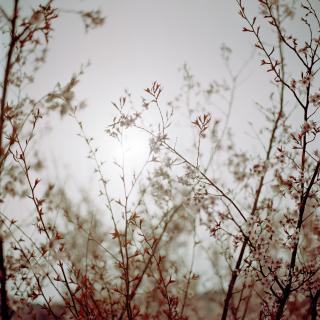Darren Almond
"Timeline"
*Closed on Sun. Mon. and National Holidays
*We will be closed for the winter holidays from 20th December, 2023 to 15th January, 2024
How do we represent time? This question is one that scientists, philosophers, and artists of all ages have been studying for thousands of years. Darren Almond (1971- ), a native of Wigan, England, explores a rich world that has been neglected by objective time and distance measures, which are assessed by numbers and verbal symbols, and looks into time in terms of human recollections, emotions, and local history. By critically examining the uniform concept of time in a controlled society where time becomes a tool of domination, and by treating techniques and media conceptually, Almond opens up a horizon of reality and imagination that continues to fluctuate over "existence," which includes not only human beings but also the earth and the universe.
Timeline is the title of Almond's first solo exhibition at SCAI THE BATHHOUSE in seven years. Multiple timelines meet throughout the exhibition space, as the title suggests. Almond's new series of works, Entropy and British Song Birds, which will be shown for the first time at this exhibition, continues the artist's trajectory to date, while also condensing his revelatory concept of time experienced, in the aftermath of the Covid-19 pandemic and the death of someone close to the artist.
Entropy emerges as a prominent new series of five paintings in the exhibition space. The large silver numeral 0 runs through the eight separated panels, creating stability to the piece as a whole. The other numerals, on the other hand, are mechanically divided up and down, drifting across the canvas like the dials of a flip clock. Static yet dynamic, the colorful fragments of numbers become an abstract landscape. It evokes a sense of déjà vu, a romanticized imaginary landscape that is never reached. The sensation is similar to Almond's Fullmoon, a series of digital photographs that capture a mysterious time when night and day seem to coexist, photographed with a long exposure in a secluded area under the natural lighting of a full moon.
Almond's approach toward time is also reflected in his production method, which took five years to complete. First, silver or other metal leaves are applied to a portion of the canvas and left to age. The colors created in this aging process are extracted digitally at a microscopic level and added to his color palette. The surface of the aged metallic leaves are sealed after the colors are extracted to freeze the time, while the newly blended colors are applied over the figures on the existing painting, leaving them exposed to change. The figures in simple industrial fonts are expanded, fractured, and colored, criticizing the idea of time in capitalist society. At the same time, they appear to inform us that convergence to numbers is unavoidable, as human language is not sophisticated enough to translate minute transitions of time that cannot be seen, astronomical and ephemeral time, or time from birth to death. Entropy is a Greek word that means irreversible change of condition under special circumstances. In this series, the numbers that physically represent the process of change become the strata of time on the canvas, calling into question the irreversibility of time itself.
Physical memory, on the other hand, is not reduced to numbers in the British Song Birds series, but emerges as the tactility of the image. At the invitation of artist David Dawson (1960- ), longtime assistant to British painter Lucian Freud (1922-2011), Almond visited Freud's studio in Kensington. In the studio, which had been preserved in the same pristine condition as when the painter was alive, Almond came across a pile of paint-stained fabrics assembled in an exquisitely balanced stack. The fabric stacks appeared chaotic at first glance, yet their colors shifted with the light of day, as if they were peacefully breathing in a studio without a master.
Almond shot the fabric piles with his smartphone and applied these digital pictures to produce two series of works. The first is a series of paintings created by printing enlarged images of the stained fabrics on canvas, adding some vivid hand paint stains, and naming the pieces after British songbirds inspired by Freud's color palette. The paint stains added by Almond, like the bright feathers of songbirds, have a unique tactile aspect, as if time, which had stood still, has begun to move again. The second is a series of lithographs printed from photographs. The title refers to the five stages of the psychosexual developmental theory of Sigmund Freud (1856-1939), a psychoanalyst who was Lucien's grandfather. The theory is that the fundamental energy of the human being lies in the sexual desire emitted by individual organs already from infancy. In both of Almond's works, which are based on a pile of fabric, we see a paradoxical presence of energy caused by the lack of the physical body.
Compared to time addressed by the above mentioned two new series, it is in the Haboku series that we find more improvisational and intuitive gestures. Unlike Entropy and British Song Birds, in which digital photography was employed in the production process and color is diffused throughout the entire image, the Haboku series emphasizes Almond's own physicality that is not reduced to the digital nor numerals, as well as marginality and flatness of the bare painting surface. From the title Haboku (破墨), we see the influence of the technique of sansui landscape painting in China and Japan (山水画, literally means mountain and water painting), which gives a sense of perspective by layering the same indigo colors to create shading, and the gravity-defying paint is suggestive of flowing waterfalls and trees. While the paintings appear to be self contemplative landscapes, they also suggest that, as the Zen master Dogen once taught, still pine trees and other plants, like people, constitute time and space, that time and space, time and existence, are always one, and that life is always and only "here and now".
A timeline, which is also the title of this exhibition, is a chronological chart or slide that has been organized to work efficiently. While Almond pays close attention to nature's cyclical time, he also suggests that our digital society's timeline system, which flows in one direction, is a device to remind us that we are mortal because time is irreversible, allowing us only to recollect the past. With its numerous crossings of time, the exhibition becomes a decentralized and abstract space for contemplation, awakening memories and feelings left behind by the current political, social, and economic control of even the time of life and death.
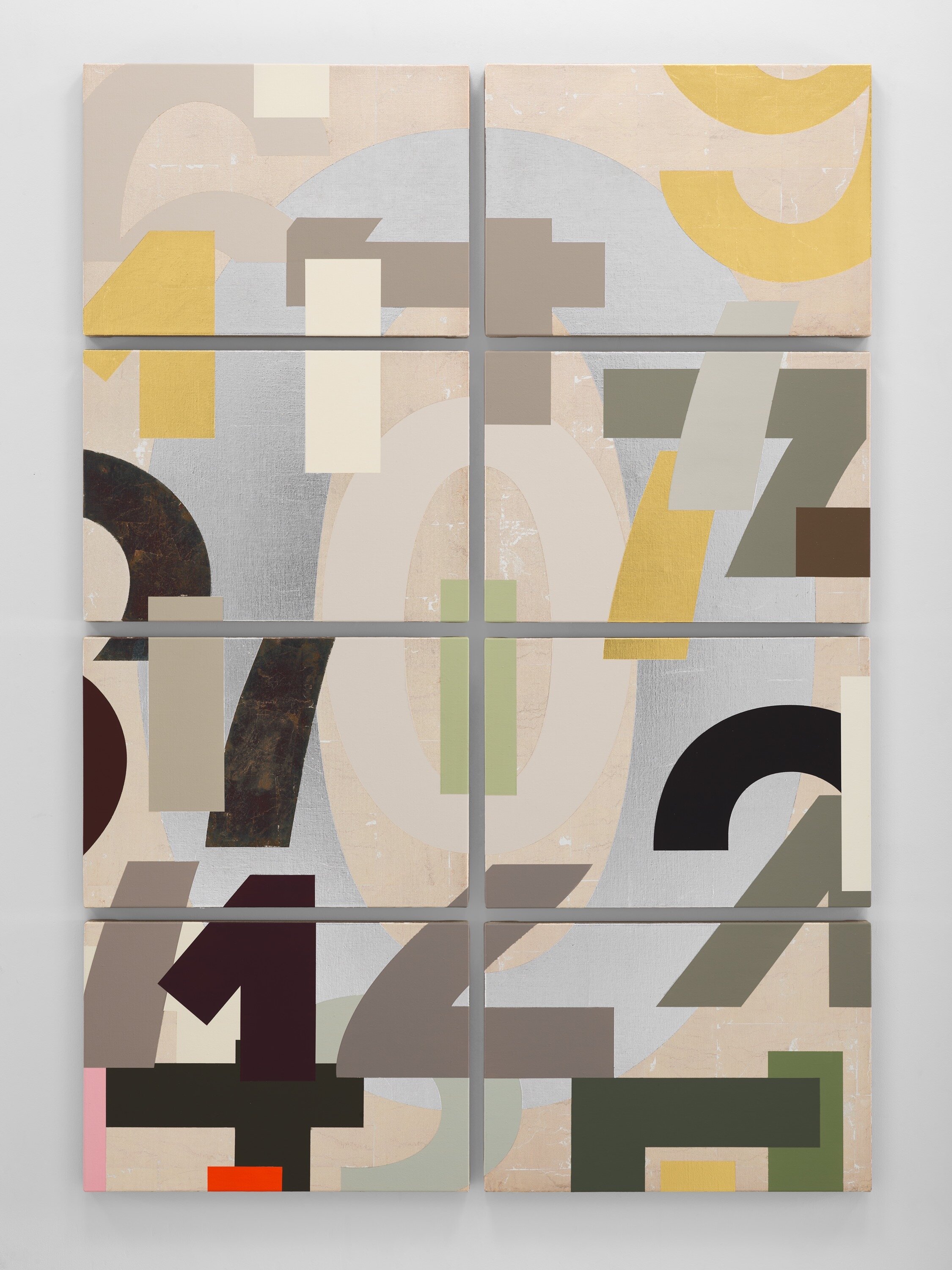
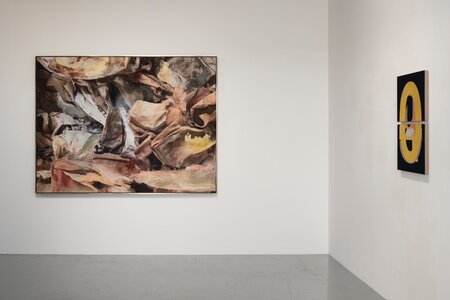
“Timeline,” 2023-2024, SCAI THE BATHHOUSE, photo by Nobutada Omote
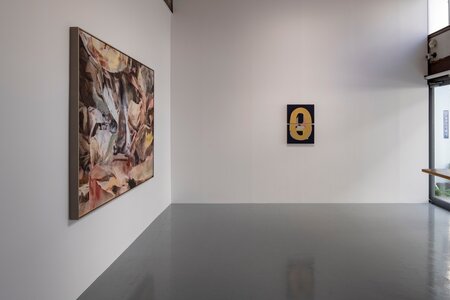
“Timeline,” 2023-2024, SCAI THE BATHHOUSE, photo by Nobutada Omote
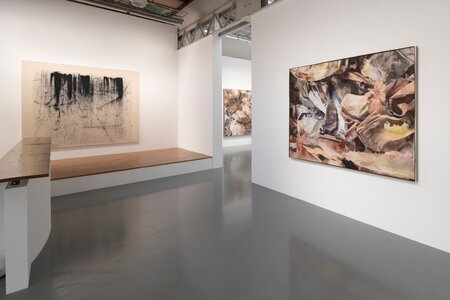
“Timeline,” 2023-2024, SCAI THE BATHHOUSE, photo by Nobutada Omote
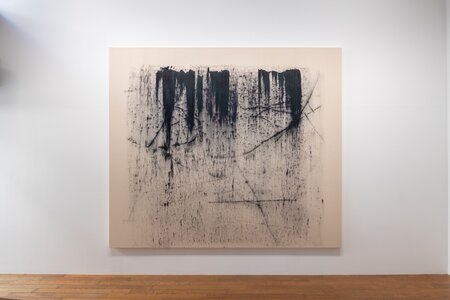
“Timeline,” 2023-2024, SCAI THE BATHHOUSE, photo by Nobutada Omote
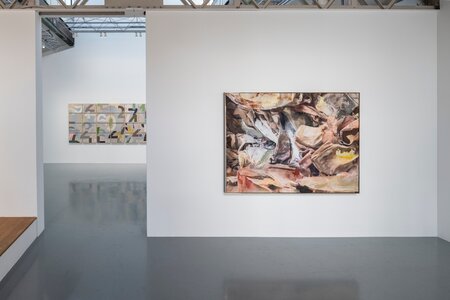
“Timeline,” 2023-2024, SCAI THE BATHHOUSE, photo by Nobutada Omote
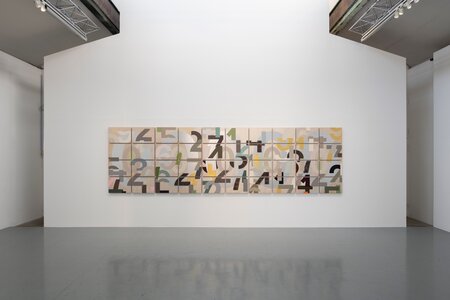
“Timeline,” 2023-2024, SCAI THE BATHHOUSE, photo by Nobutada Omote
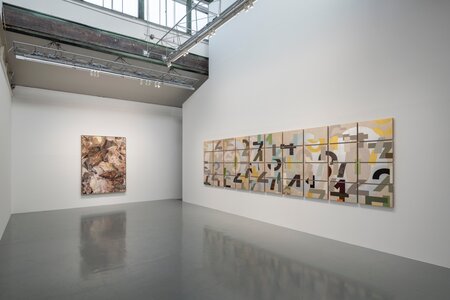
“Timeline,” 2023-2024, SCAI THE BATHHOUSE, photo by Nobutada Omote
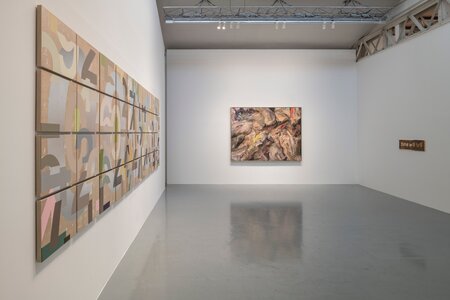
“Timeline,” 2023-2024, SCAI THE BATHHOUSE, photo by Nobutada Omote
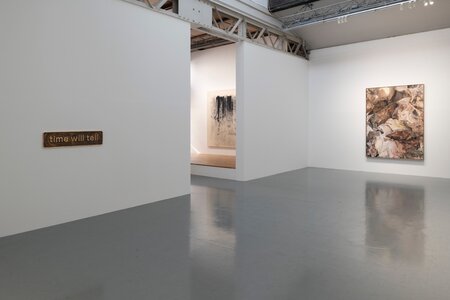
“Timeline,” 2023-2024, SCAI THE BATHHOUSE, photo by Nobutada Omote
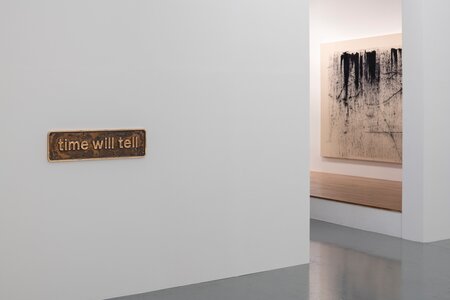
“Timeline,” 2023-2024, SCAI THE BATHHOUSE, photo by Nobutada Omote
